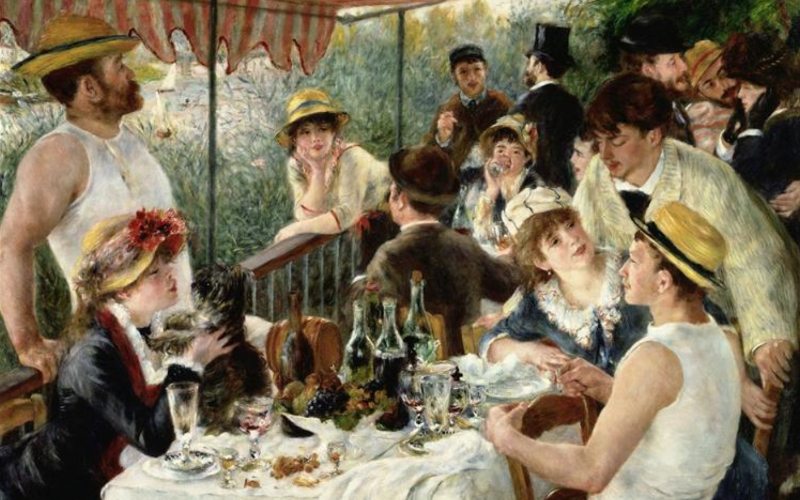French impressionist Pierre-Auguste Renoir created a painting titled Luncheon of the Boating Party in 1881.
Three critics deemed it the best painting in the Seventh Impressionist Exhibition, which it was a part of, in 1882. The industrialist Duncan Phillips spent a decade looking for the piece before buying it from the artist’s dealer-patron Paul Durand-Ruel in 1923 (for $125,000).
It is currently kept in Washington, D.C.’s Phillips Collection. Richness of form, fluidity of brushstroke, and flickering light are all evident in this painting.
Painting depiction
The painting shows a group of Renoir’s friends unwinding on a balcony at the Maison Fournaise restaurant along the Seine river in Chatou, France. It combines figures, still life, and landscape in one piece. Gustave Caillebotte, a painter and art patron, is seated in the lower right.
Aline Charigot, who would later become Renoir’s wife, can be seen in the foreground interacting with a small dog named an affenpinscher. She took the place of an earlier model who sat for the painting but whom Renoir found annoying. There is fruit and wine on the table.
With the exception of the two figures of the proprietor’s daughter Louise-Alphonsine Fournaise and her brother Alphonse Fournaise, Jr., which are made prominent by this contrast, the diagonal of the railing serves to demarcate the two halves of the composition. One is densely packed with figures, while the other is almost entirely empty.
Renoir has successfully captured a lot of light in this painting. The large balcony opening next to the large single-headed man wearing a hat is where most of the light is coming from. The tablecloth and the singlets worn by the two men in the foreground combine to reflect this light and spread it throughout the entire composition.
The Wedding Feast at Cana (1563), one of Renoir’s favorite Veronese paintings at the Louvre, which depicts a banquet theme similar to that of the Luncheon, is thought to demonstrate Paolo Veronese’s influence on Renoir’s style.


